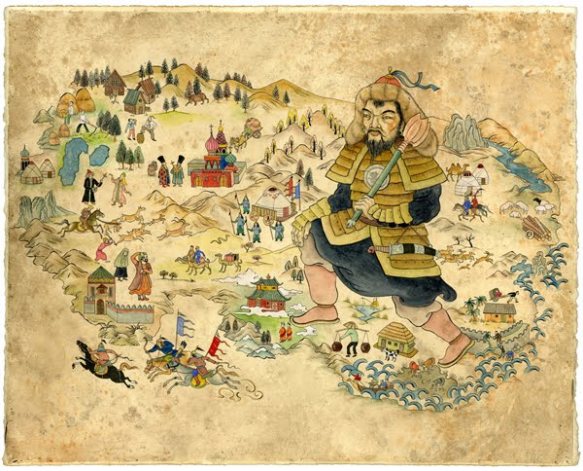The basic dilemma of Mongol rule in China—the Mongols’ inability to achieve a durable identification with Chinese civilian institutions and to modify the military and colonialist character of their rule—became more apparent under Kublai’s successors and reached a maximum under Togon-temür, the last Yuan ruler. Togon-temür was not unfriendly toward Chinese civilization, but this could not alter the contempt of many leading Mongols for Chinese civilian institutions. For centuries China had known clique factionalism at court, but this was mostly fought with political means; Mongol factionalism usually resorted to military power. Militarization gradually spread from the Mongol ruling class into Chinese society, and not a few dissatisfied Chinese leaders established regional power based on local soldiery. The central administration headed by a weak emperor proved incapable of preserving its supremacy.
Thus, the military character of Mongol rule paved the way for the success of Chinese rebels, some of whom came from the upper class, while others were messianic sectarians who found followers among the exploited peasantry. The Mongol court and the provincial administrations could still rely on a number of faithful officials and soldiers, and so the progress of the rebel movement in the 1350s and 1360s remained slow. But the rebel armies who had chosen what is now Nanjing as their base took Dadu in 1368; the Mongol emperor fled, followed by the remnants of his overthrown government.
The Mongols remained a strong potential enemy of China for the next century, and the Genghis Khan clan in Mongolia continued to regard itself as the legitimate ruler of China. The century of Mongol rule had some undesirable effects on the government of China: imperial absolutism and a certain brutalization of authoritarian rule, inherited from the Yuan, were features of the succeeding Ming government. Yet, Mongol rule lifted some of the traditional ideological and political constraints on Chinese society. The Confucian hierarchical order was not rigidly enforced as it had been under the Tang and Song, and the Mongols thereby facilitated the upward mobility of some social classes, such as the merchants, and encouraged extensive growth of popular culture, which had been traditionally downgraded by the literati.
#
Ineptitude on the throne, bureaucratic factionalism at court, rivalries among Mongol generals, and ineffective supervision and coordination of provincial and local administration had gravely weakened the Yuan government by the 1340s. And in 1351 disastrous flooding of the Huang and Huai river basins aroused hundreds of thousands of long oppressed Chinese peasants into open rebellion in northern Anhui, southern Henan, and northern Hubei provinces. Rebel movements, capitalizing on the breakdown of Yuan control, spread rapidly and widely, especially throughout central China. By the mid-1360s, large regional states had been created that openly flouted Yuan authority: Song in the Huai basin, under the nominal leadership of a mixed Manichaean-Buddhist secret-society leader named Han Lin’er; Han in the central Yangtze valley, under a onetime fisherman named Chen Youliang; Xia in Sichuan, under an erstwhile general of the rebel Han regime named Ming Yuzhen; and Wu in the rich Yangtze delta area, under a former Grand Canal boatman named Zhang Shicheng. A onetime salt trader and smuggler named Fang Guozhen had simultaneously established an autonomous coastal satrapy in Zhejiang. While Yuan chieftains contended with one another for dominance at the capital, Dadu (present-day Beijing), and in the North China Plain, these rebel states to the south wrangled for survival and supremacy. Out of this turmoil emerged a new native dynasty called Ming (1368–1644).
